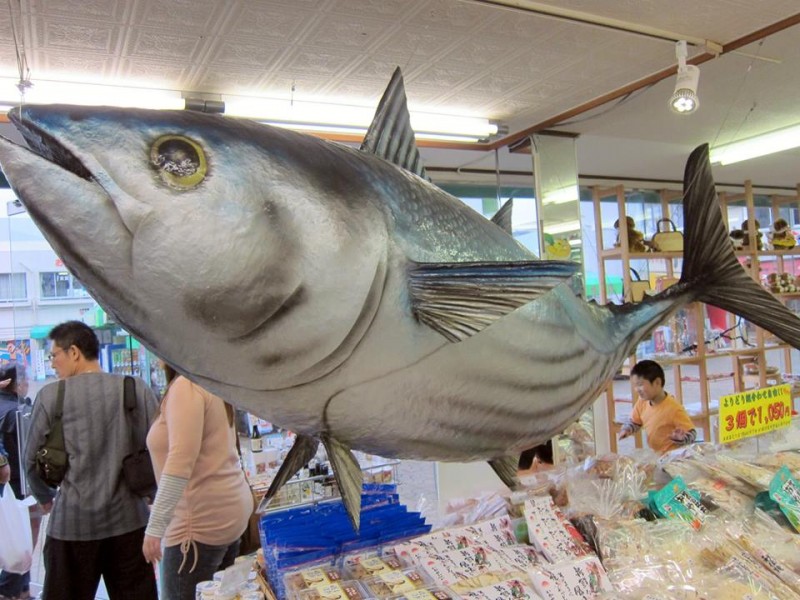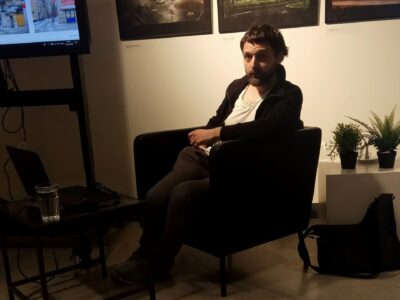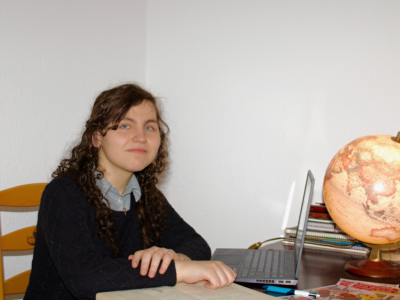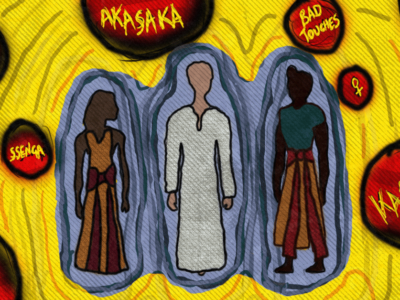
Katsuo Ningen promoting a 2015 contest to vote for Kochi's best eateries. Photo courtesy Marugoto Kochi / Kochi Tourism and Promotion Agency
In a country used to whimsical mascots, even Japanese people are somewhat surprised by “Bonito Man,” better known in the country as Katsuo Ningen, the loincloth-clad, humanoid skipjack tuna that represents Kochi, one of Japan's most isolated prefectures.
Why the surprise?
When viewed from behind, it's apparent that Katsuo Ningen is a giant severed fish head:
【グロ注意!!】恐怖のカツオ人間の画像ギャラリー【高知県ご当地マスコットキャラ】 – NAVER まとめ http://t.co/3lpHeBEwLB この断面に惹かれましたw pic.twitter.com/FcHG8BZ6Pm
— ひつじめ (@666_Lamb_G) April 24, 2013
Gross-out alert: Here's a scary Naver Moteme gallery (http://t.co/3lpHeBEwLB) of local Kochi mascot Katsuo Ningen. This cross-section is totally cool.
Katsuo Ningen was created by the Kochi Prefecture's government in 2011 to work as an ambassador mascot in the prefecture’s tourism promotion office in Ginza, Tokyo. Katsuo Ningen has since relocated from the big city lights of Tokyo to Kochi, where he spends his days travelling to different siteseeing spots and promoting all the things that make this largely rural prefecture so great.
From his home base in Kochi, Katsuo Ningen continues to run a popular Facebook page and an even more popular Twitter account. The mascot is also the star of a series of web movies promoting Kochi Prefecture, called “Katsuo Ningen: the Movie – Let's Go to Hariyama Bridge“:
All in all, Katsuo Ningen's popularity is a triumph for rural Kochi Prefecture. The mascot takes its name and shape from the skipjack fish that people all over Japan have traditionally associated with Kochi Prefecture.
Dried skipjack is a core ingredient of Japanese cooking, and is used in many regions to create soup stock and as a garnish. The fishery in Kochi has long provided the country with the bulk of this key staple of Japanese cuisine.
When it comes to katsuo, Kochi is the first place that comes to mind for many people in Japan.

A replica of a katsuo, or skipjack, at a souvenir shop in Tatsurahama in Kochi Japan. Photo courtesy Nevin Thompson
Keeping Kochi top of mind in Japan is a priority for the prefecture's residents. Located on the Pacific coast of the island Shikoku, Kochi is surrounded by mountains and far from any high-speed rail links. The prefecture is hard to get to, and so there is an ongoing battle to keep tourists — and the money they spend — flowing into Kochi.

Plastic replica for display of seared katsuo with sea salt, garlic and citrus dip – a Kochi speciality. Photo courtesy Nevin Thompson.
Promoting industries such as tourism is also a priority. The prefecture regularly reports the lowest hourly wages and annual household income of any prefecture in Japan, with some of the highest youth unemployment rates.
The ongoing brain drain to Tokyo also means Kochi is ageing more rapidly than other prefectures.
Katsuo Ningen has company
However, all regions in Japan, down to the smallest villages, have created mascots to in turn create a strong local brand that appeals to visitors.
While Katsuo Ningen has become a bona fide cult personality in Japan, other mascots have become superstars.
Kumamon, a mascot created by rural Kumamoto Prefecture in 2010 to promote new high-speed rail service linking that prefecture with Tokyo, has since become ubiquitous.
Savvy licensing deals have ensured Kumamon's visage appears on everything from underwear to vinyl toilet slippers:
①◆未使用◆くまモン ヘッドフォン・リールキーホルダー他5点 http://t.co/0C5CNNLjN4 pic.twitter.com/fX1jPprttO
— くまモンちゃん (@kumamonchan888) March 3, 2015
Kumamon headphones and keyholder for sale online.
Japan's regions will go to almost any length to generate some good PR coverage with their mascot ambassadors.
Here, Funabashi City's homegrown, unofficial mascot Funassyi (an anthropomorphic pear, a key Funabashi crop) addresses the Foreign Correspondents’ Club in Tokyo:
The Wall Street Journal asks how much Funassyi charges per hour. (We wonder for ‘what services'?) 1000 pears per hour pic.twitter.com/Fj1pw4s2Vq
— Jake Adelstein/中本哲史 (@jakeadelstein) March 5, 2015
Sometimes it's not immediately apparent what the attraction of a particular mascot might be.
Okazaemon, the unoffical mascot of Okazaki City in Aichi Prefecture, was originally created as an installation for an art show in that city.
おかざえもんってご当地キャラベスト5入りしてるんだって。。 pic.twitter.com/6sDBSbxo1E
— 植竹っけだよ〜 (@Kekke_dayo) January 2, 2015
Okazaemon has to be one of Japan's top 5 local mascots…
Despite Okazaemon's unusual appearance and slightly ironic origins, the character developed a cult following in Japan as well as a follow-up female counterpart, Okazaennu.
Proof, perhaps, that mascots are a powerful way for regions to capture the attention of potential visitors all over Japan.
御当地キャラ全員集合!スマブラww pic.twitter.com/QwpOSmHOaQ
— 啼 -Naki- (@nakkiii666) September 13, 2014
It's a mascot meetup!
In an era of declining tax revenues and increasing costs for delivering services as Japan's population ages, some have pointed out that there are better things for local governments to be spending money on.
So, 2014 marked Japan's mascot cull, where cuddly characters gauged to have little public recognition faced the axe.
However, Katsuo Ningen still continues to survive and thrive, likely due in part to Japan's love of eating seared bonito.
カツオ人間…!? いや!カツオのたたき人間!!!Σ(゚ロ゚! #土佐のおきゃく #カツオ人間 #皿鉢祭 pic.twitter.com/XedjffuZ81
— 一誠 (@02issei27) March 8, 2015
Can this be Katsuo Ningen? Oh no! It's Katsuo Tataki (seared bonito) Ningen! Σ(゚ロ゚! #visitingKochi #katsuoningen #sawachimatsuri







1 comment